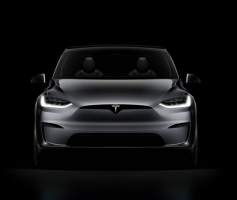
— A Tesla Model X crash lawsuit has been partly dismissed after the plaintiff alleged his Model X crashed because the Autopilot and automatic emergency braking systems failed.
Plaintiff Wai-Leung Chan says he was driving his Tesla Model X on the Long Island Expressway in December 2017 when an Audi merged between the Tesla and a tractor-trailer in front of him.
Chan says Autopilot was activated but it failed to react to the situation, and the automatic emergency braking function allegedly did nothing to prevent the crash.
The plaintiff says in one second he swerved to the left to avoid a crash, but his Model X still hit two vehicles ahead of him.
The crash damaged the two vehicles and the Tesla Model X was deemed a total loss.
According to the lawsuit, the plaintiff claims he purchased the Model X because it was equipped with the Autopilot feature, a driver assistance system to help drivers navigate “the burdensome parts of driving.”
The plaintiff further says he visited a Tesla showroom and was allegedly told the Model X with Autopilot would work well for his driving habits because “he could take the Tesla into the HOV lane . . . and then close his eyes and relax.”
According to the lawsuit, Tesla did not tell him about the limitations of the Tesla Model X Autopilot system before he purchased the vehicle.
Motion to Dismiss the Tesla Model X Crash Lawsuit
The plaintiffs claim Tesla committed fraud, and to state a claim for fraud in New York the plaintiffs must establish, “a misrepresentation or a material omission of fact which was false and known to be false by defendant, made for the purpose of inducing the other party to rely upon it, justifiable reliance of the other party on the misrepresentation or material omission, and injury.”
In its motion, Tesla argues the plaintiffs have failed to state a claim for fraud and they have made only vague allegations not specific enough for fraud claims.
But the plaintiffs argue they were fooled by alleged misrepresentations about Autopilot made on Tesla’s website, including the Model X is the “safest, quickest, and most capable sport utility vehicle in history” and “the safest SUV ever” and that the Autopilot feature assumes “the burdensome parts of driving.”
However, the judge notes the lawsuit doesn't claim the plaintiffs viewed and relied upon these specific statements on Tesla’s website in 2015 or 2016. According to Judge Nicholas G. Garaufis, the fraud allegations fail because the plaintiffs do not identify the specific representations on Tesla’s website they relied upon.
Next, the plaintiffs also allege they were misled by statements made by Tesla representatives in the showrooms, including that Chan could allegedly close his eyes and relax after putting the car on Autopilot.
But the judge ruled that statement by itself does not meet the elements of a fraud claim or the intent of Tesla to commit fraud.
The plaintiffs then argue Tesla’s "superior knowledge of essential facts regarding the Autopilot technology’s limitations and defects" means Tesla had a duty to disclose to consumers what it knew.
However, the judge says the plaintiffs haven't alleged with any specificity what alleged defects were concealed from them.
"Accordingly, the facts alleged do not give rise to a claim that Tesla committed fraud by failing to affirmatively disclose “special facts” that were known to Tesla and unknowable by Plaintiffs." — Judge Garaufis
By the end, the judge granted Tesla's motion to dismiss the fraud claims but denied Tesla's motion to dismiss punitive and exemplary damages claims.
The Tesla Model X crash lawsuit was filed in the U.S. District Court for the Southern District of New York: Jing Wang and Wai-Leung Chan, v. Tesla, Inc.
The plaintiffs are represented by Nelson Law, LLC, in New York.




